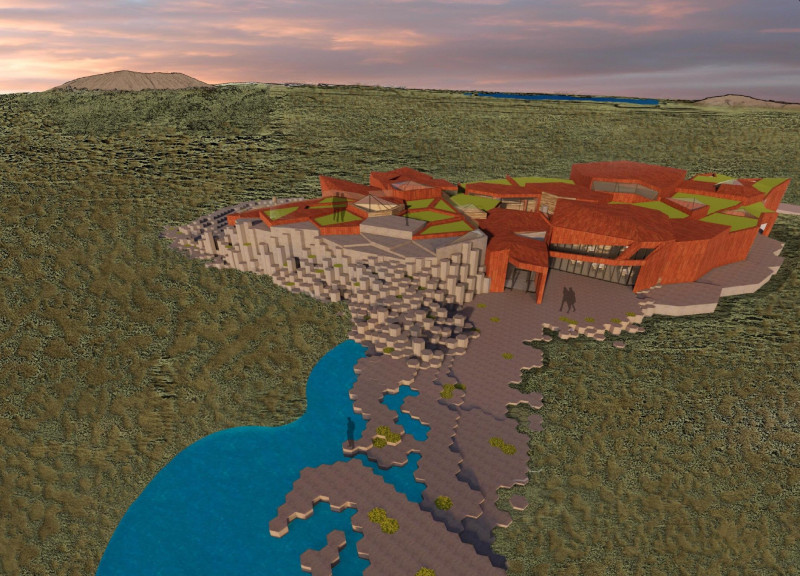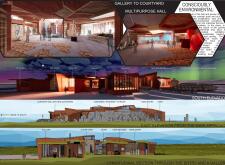5 key facts about this project
The architectural design project described is located in Iceland, situated near Hverfjall Volcano and Lake Mývatn. It embodies an approach that emphasizes the integration of the built environment with the surrounding natural landscape. The design features a low-profile structure that appears to emerge organically from the earth, reflecting the region’s geological characteristics. This architecture is conceived as not merely a building but as an extension of the site, with a functional purpose that revolves around galleries and multipurpose spaces for public engagement.
Sustainable practices are central to the project, which includes careful material selection and an energy-efficient design. The combination of passive heating and cooling strategies, along with abundant natural light through large windows, ensures that the interior spaces are comfortable and inviting, reducing reliance on artificial energy sources.
Material Selection and Sustainability
The project employs a range of materials that are both locally sourced and environmentally conscious. The use of EFC Sustainable Concrete minimizes carbon emissions in its production and adds thermal mass to enhance building performance. Icelandic Basalt Slabs serve as both aesthetically pleasing and contextually appropriate for pathways. The incorporation of Icelandic Wood for structural components not only supports local forestry but also reinforces a connection with the natural environment.
The exterior features a terracotta rainscreen that provides durability and reflects traditional architectural styles, while the green roofs enhance insulation and promote biodiversity. These design decisions contribute to the project’s overall mission of sustainability and environmental responsibility.
Unique Design Approaches
One of the defining aspects of this project is its holistic integration with the landscape. Rather than imposing a foreign structure onto the site, the design fosters a dialogue between the architecture and the natural elements surrounding it. By using forms that mimic the contours of the land, the overall visual impact is not one of disruption but of unity.
Moreover, the central courtyard is a distinctive feature that allows for public interaction and engagement with both the architecture and the landscape. This space functions effectively as a hub, balancing indoor and outdoor experiences and promoting social connectivity among visitors.
The emphasis on natural materials and environmentally friendly practices ensures that the structure not only meets functional requirements but also resonates with its surroundings, offering visitors an immersive experience that reflects Iceland’s rich geological heritage.
To explore this architectural design further, including detailed architectural plans, sections, and visual concepts, readers are encouraged to delve deeper into the project presentation. Understanding the architectural ideas behind this design will provide valuable insights into its innovative approaches and sustainable practices.





















































